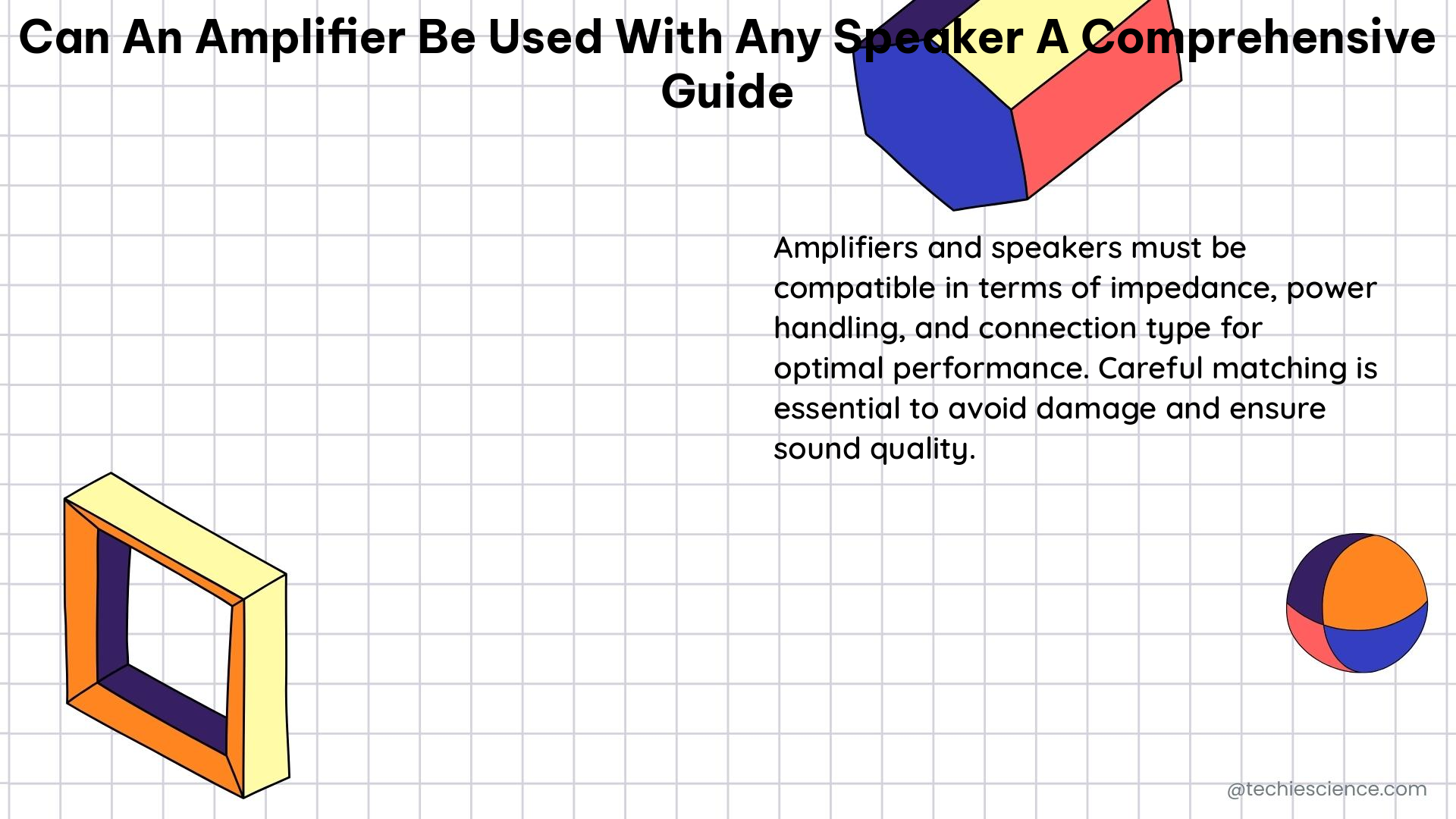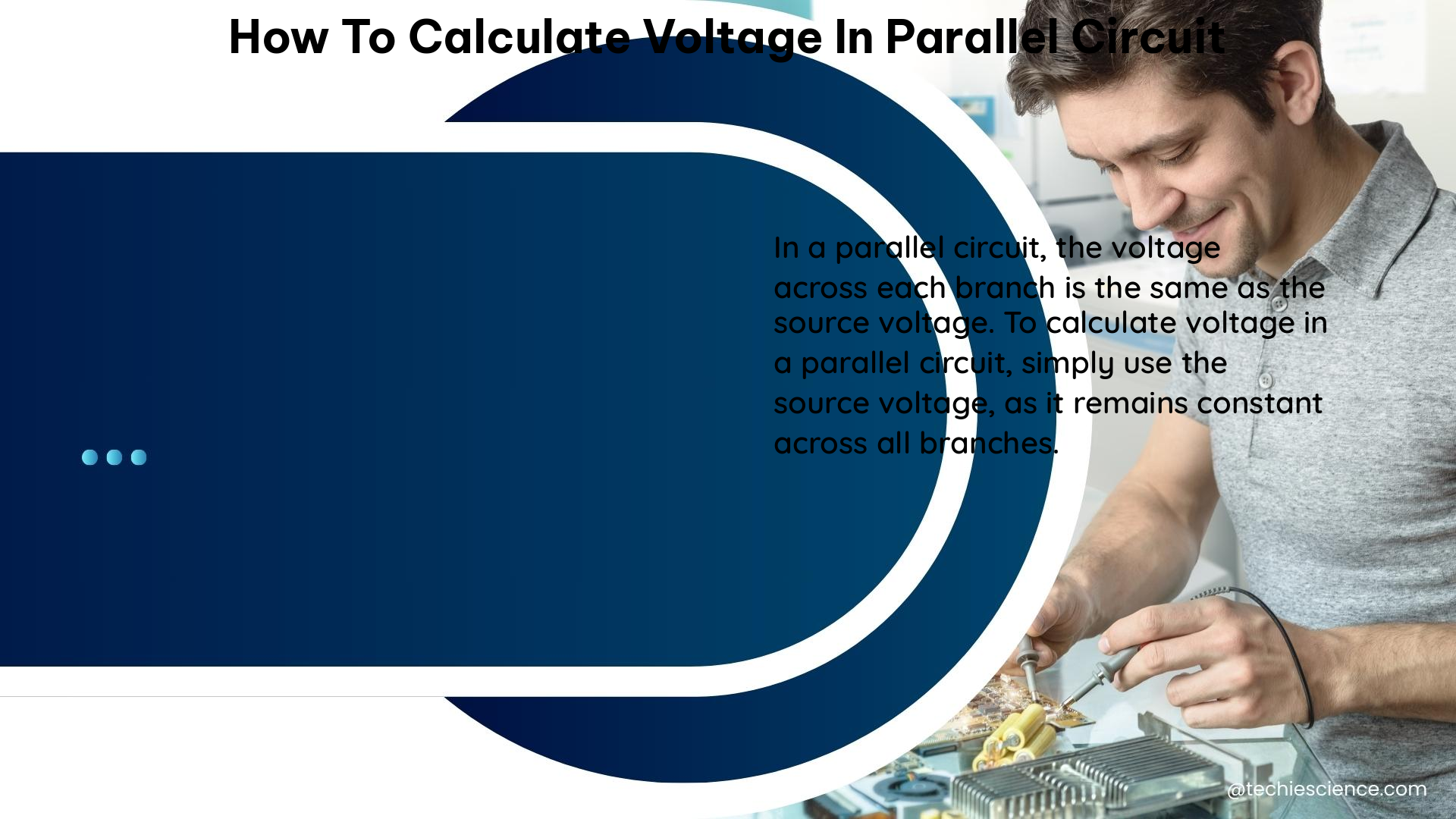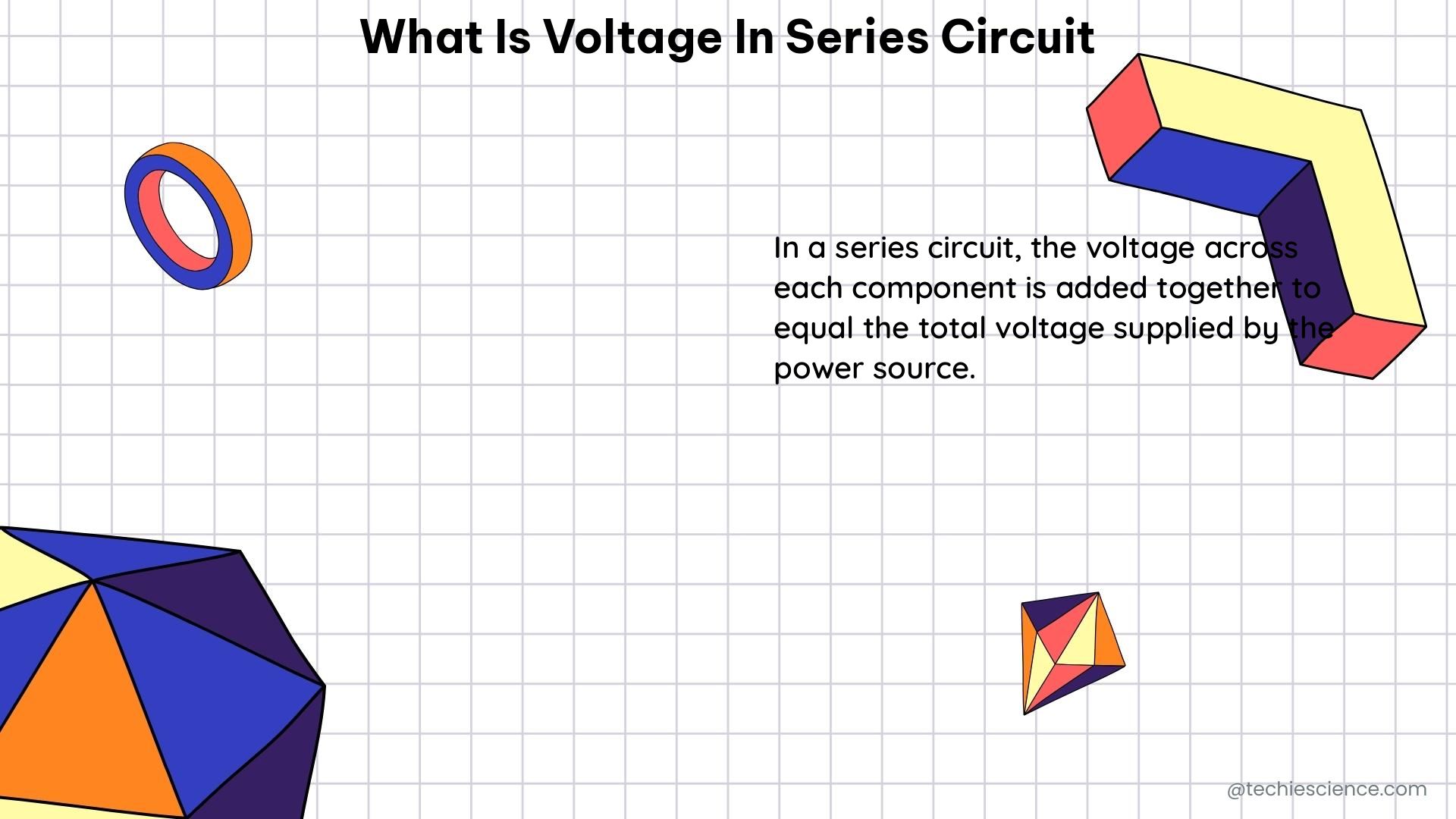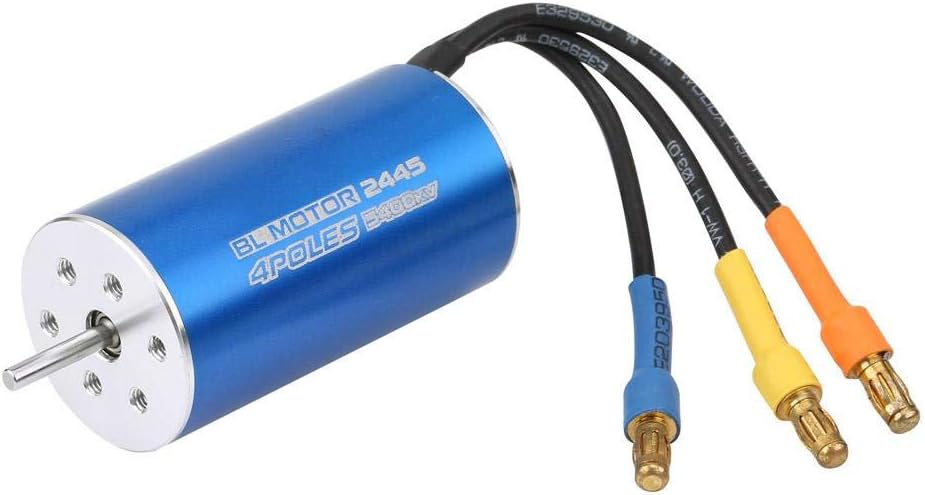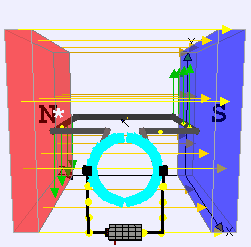The voltage drop across a diode, often ranging from 0.6 to 0.7 volts, is a crucial aspect of diode functionality in electronic circuits. This voltage drop is primarily determined by the diode’s I-V (current-voltage) characteristics, which illustrate the relationship between the voltage and current flowing through the diode. The diode voltage drop is influenced by the diode’s forward current, with a slight increase in voltage drop as the forward current increases. This small increase is often disregarded in practical applications.
Diode I-V Characteristics and Voltage Drop
The I-V characteristics of a diode are typically represented by a graph that shows the relationship between the forward voltage (VF) and the forward current (IF) of the diode. This graph can be used to determine the voltage drop across the diode for a given forward current.
The forward voltage drop of a diode is influenced by several factors, including:
-
Diode Material: The type of semiconductor material used in the diode, such as silicon (Si) or germanium (Ge), affects the voltage drop. Silicon diodes typically have a forward voltage drop of around 0.6-0.7 V, while germanium diodes have a lower forward voltage drop of around 0.2-0.3 V.
-
Forward Current: As the forward current through the diode increases, the forward voltage drop also increases slightly. This relationship is generally linear, with the voltage drop increasing by a small amount (typically 0.01-0.02 V) for every tenfold increase in forward current.
-
Temperature: The forward voltage drop of a diode is also affected by temperature. As the temperature increases, the forward voltage drop typically decreases by about -2 mV/°C for silicon diodes and -4 mV/°C for germanium diodes.
To illustrate the I-V characteristics of a diode, consider the following example:
| Forward Current (IF) | Forward Voltage (VF) |
|---|---|
| 1 mA | 0.60 V |
| 10 mA | 0.65 V |
| 100 mA | 0.70 V |
As shown in the table, as the forward current increases from 1 mA to 100 mA, the forward voltage drop of the diode increases from 0.60 V to 0.70 V. This demonstrates the non-linear relationship between the forward current and voltage drop of a diode.
Diode Voltage Drop in Series with a Resistor
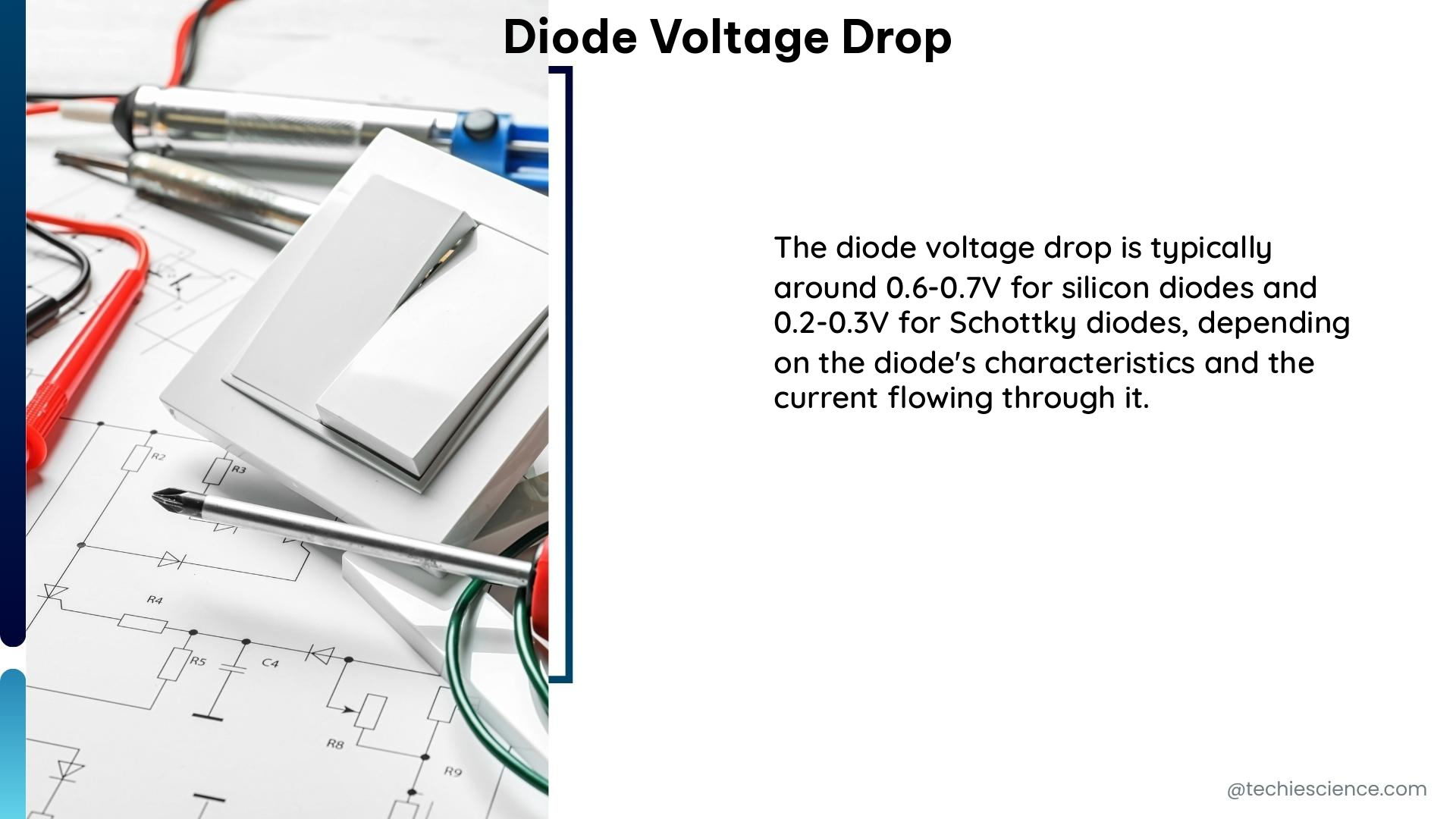
When a diode is connected in series with a resistor, the voltage drop across the diode and the resistor will be the same, regardless of whether the resistor is placed before or after the diode. However, it’s essential to consider that the diode’s voltage drop is not a constant value but rather a function of the forward current.
To calculate the total voltage drop across the diode and resistor, you can use the following formula:
VT = VD + VR
Where:
– VT is the total voltage drop across the diode and resistor
– VD is the voltage drop across the diode
– VR is the voltage drop across the resistor
The voltage drop across the resistor (VR) can be calculated using Ohm’s law:
VR = I × R
Where:
– I is the forward current flowing through the circuit
– R is the resistance of the resistor
By substituting the formula for VR into the total voltage drop equation, you can calculate the total voltage drop as:
VT = VD + I × R
It’s important to note that the diode voltage drop (VD) is not a constant value but rather a function of the forward current (I). This means that the total voltage drop across the diode and resistor will vary depending on the forward current flowing through the circuit.
Measuring Diode Voltage Drop
There are several methods for measuring the diode voltage drop, each with its own advantages and limitations.
Using a Digital Multimeter in Diode Test Mode
One common approach is to use a digital multimeter with a “Diode Test” mode. In this mode, the multimeter applies a small voltage (typically around 1 V) between the test leads and measures the voltage drop across the diode when it is forward-biased.
To use the Diode Test mode:
1. Connect the positive (red) test lead to the anode of the diode and the negative (black) test lead to the cathode.
2. The multimeter will display the forward voltage drop of the diode, which should typically be in the range of 0.6-0.7 V for silicon diodes or 0.2-0.3 V for germanium diodes.
This method is generally the most accurate for testing diodes, as it directly measures the forward voltage drop of the diode under a known forward current.
Using the Resistance Mode (Ω)
Another method for measuring the diode voltage drop is to use the Resistance mode (Ω) on a digital multimeter. In this mode, the diode is forward-biased when the positive (red) test lead is connected to the anode, and the negative (black) test lead is connected to the cathode.
The forward-biased resistance of a good diode should range from 1000 Ω to 10 MΩ. However, this method may not always indicate whether a diode is good or bad and should be used with caution, particularly when the diode is connected in a circuit, as it can produce false readings.
It’s important to note that the Resistance mode method is less accurate than the Diode Test mode, as it does not directly measure the forward voltage drop of the diode. Instead, it measures the resistance of the diode, which can be affected by various factors, such as the forward current and temperature.
Factors Affecting Diode Voltage Drop
The diode voltage drop can be influenced by several factors, including:
-
Diode Type: As mentioned earlier, the type of semiconductor material used in the diode (silicon or germanium) affects the voltage drop. Silicon diodes typically have a higher voltage drop than germanium diodes.
-
Forward Current: The forward current flowing through the diode has a direct impact on the voltage drop. As the forward current increases, the voltage drop also increases slightly.
-
Temperature: The temperature of the diode can affect its voltage drop. As the temperature increases, the voltage drop typically decreases for both silicon and germanium diodes.
-
Diode Characteristics: The specific characteristics of the diode, such as its forward voltage, reverse breakdown voltage, and maximum forward current, can also influence the voltage drop.
-
Diode Aging: Over time, the characteristics of a diode can change due to aging, which can affect the voltage drop. Older or damaged diodes may have a higher voltage drop than new, well-functioning diodes.
Understanding these factors is crucial when designing and troubleshooting electronic circuits that involve diodes, as the diode voltage drop can have a significant impact on the overall circuit performance.
Conclusion
The diode voltage drop is a critical aspect of diode functionality in electronic circuits. It is primarily determined by the diode’s I-V characteristics, which illustrate the relationship between the voltage and current flowing through the diode. The voltage drop can be influenced by various factors, including the diode material, forward current, temperature, and diode characteristics.
Measuring the diode voltage drop can be accomplished using a digital multimeter in Diode Test mode or Resistance mode, with the former being the most accurate method. It’s essential to consider that the diode voltage drop is not a constant value but rather a function of the forward current, which varies depending on the specific diode and circuit conditions.
By understanding the principles of diode voltage drop and the factors that affect it, electronics engineers and hobbyists can design and troubleshoot circuits more effectively, ensuring optimal performance and reliability.
References:
– Calculating the Voltage Drop on a Diode in Series with a Resistor
– Basic Question About Diode Voltage Drop and Resistor Position
– How to Test Diodes

